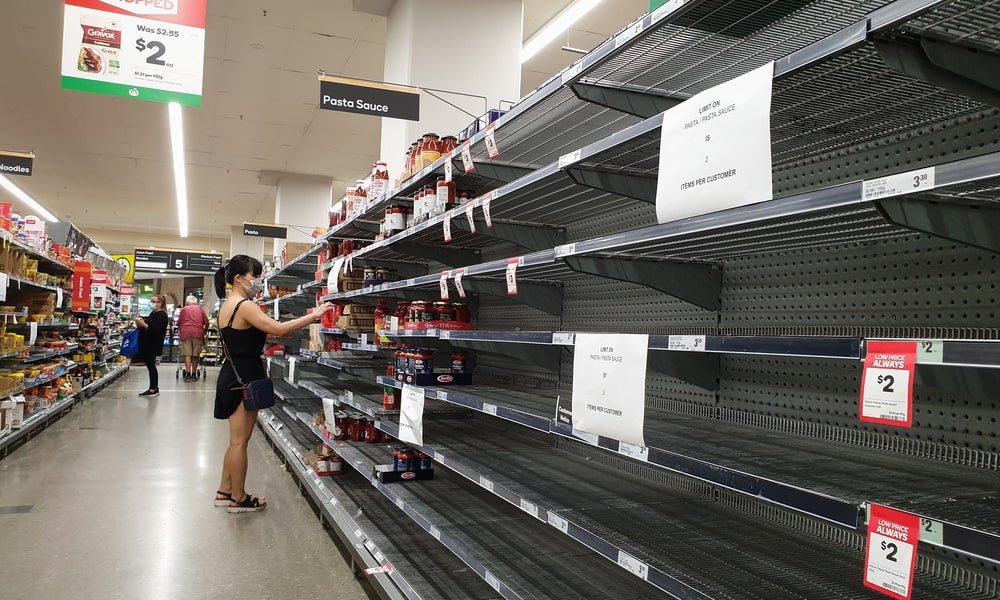How to produce a meaningful CPI during COVID-19 lockdown
When products are not available during a lockdown, consumption growth will be overstated and changes in the cost of living will be underestimated, according to UNSW Business School’s Erwin Diewert and Kevin Fox
The COVID-19 pandemic has caused countries worldwide to go into lockdown and various industries to shut down. In effect, this means that households can no longer purchase products and services that were previously available – such as restaurant dining experiences, tourism activities, sporting events, gyms, international air travel and most types of personal services.
The impact of COVID-19 on inflation
While many know inflation to be of great relevance to the Reserve Bank when determining interest rate policies, it is also used for a broader range of purposes such as wage setting, business contract indexation and determining the level of welfare payments.
As inflation is measured by the Consumer Price Index (CPI) – what happens when many of the goods and services (needed to calculate CPI) suddenly become unavailable on the market?
This is the problem faced by national statistical offices around the world, including the Australian Bureau of Statistics (ABS).
Household expenditures taken from surveys are typically used to weight price changes in different categories of products. However, under lockdown conditions, this ‘fixed basket’ of goods and services has become almost irrelevant as people can no longer buy many typical products.
The pandemic also initially caused many people to panic buy and changed their usual expenditure patterns. An example is an increase in spending on food and less on clothes.

The need for new methods to calculate the CPI
Standard methodologies were developed to cater for situations where old products replace new products in CPI calculations.
However, the problem today is that not just a few products per expenditure category are missing – it can be the entire expenditure category itself.
While the current advice from the European Statistical Office, the International Monetary Fund and the United Nations is to essentially apply existing methodologies, none of them have been developed to accurately reflect the economic impact of the coronavirus.
Based on our research, using standard methodologies when dealing with disappearing products will result in the CPI underestimating changes in the cost of living and consumption growth will be overstated.
Good policy and good business decisions often depend on having reliable information. Using biased economic statistics to navigate through the lockdown period and recovery threatens to unnecessarily lengthen the recovery. For example, an overstatement of consumption growth may lead policymakers to believe that the economy needs less stimulus than actually required to achieve their policy goal.
How to produce a correct CPI during lockdown
Many national statistical offices around the world are struggling with a lack of detailed data on prices and expenditures, and even collecting product prices from stores has become complicated. For the safety of employees and in accordance with social distancing measures, they are switching to collecting product prices online. However, research has indicated that online prices tend to be different from in-store prices.
Due to recent innovations, the ABS is, however, relatively well-placed. Since 2017, the ABS has extensively used electronically sourced information in the CPI, using the methodology developed with researchers at the UNSW Centre for Applied Economic Research through the Australian Research Council Linkage Grants scheme.

As a result of this prescient and world-leading move to maximise the use of available information, the ABS is in a relatively strong position to capture price movements and expenditure changes for supermarket goods in particular.
Problems remain, however, for broader categories of goods and services.
What’s the solution for an accurate CPI?
The only way to produce a meaningful CPI during the lockdown period is by establishing a continuous household expenditure survey. Our research suggests that the ABS should be funded and supported to urgently set up such a survey. Unlike GDP, unemployment and other key economic statistics, estimates of the CPI cannot be revised due to the nature of its uses by government and businesses.
In the current situation, there is a strong case for allowing the CPI to be revised as new information becomes available. Based on our research, we strongly recommend that at least one additional revisable consumer price index series should be published to complement the standard CPI.
The revisable series would be able to incorporate new information as it becomes available after the standard CPI is published. This will provide a more accurate inflation measure for policymakers and analysts to use in their economic models as well as in future decision-making. A lockdown should not mean that we are locked into using poor information for years to come.
For more information please contact Professor Kevin Fox, Director of the Centre for Applied Economic Research (CAER) or Professor Erwin Diewert in the School of Economics at UNSW Business School.
